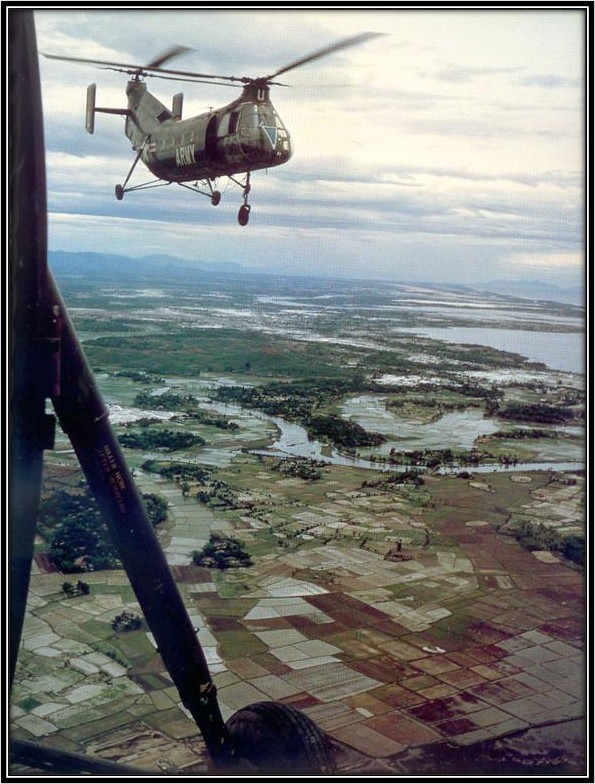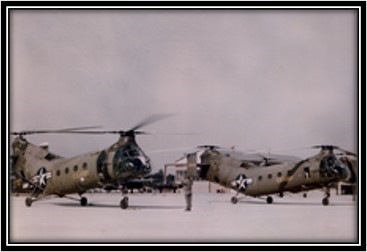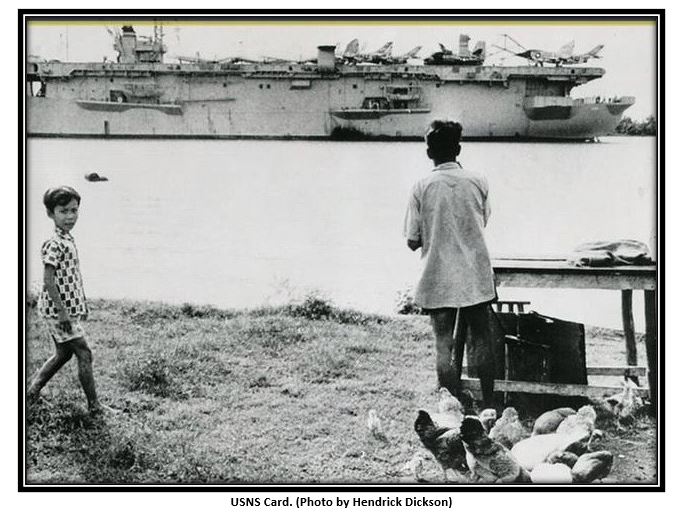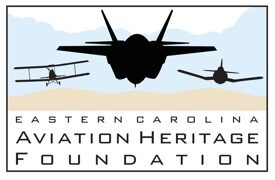Good morning fellow ECAHF’ers. If you were not informed, or if informed but didn’t look closely, you might mistake the Piasecki (and then the Vertol) H-21 Shawnee pictured below as the CH-46 Sea Knight flown by our esteemed ECAHF chairman, Major General (USMC, retired) Tom Braaten.
In fact, they’re so similar in appearance that I asked AI (Bing’s Copilot) if the CH-46 was essentially “copied” from the H-21. Here was AI’s answer: The CH-46 Sea Knight was not a direct copy of the Vertol H-21C Shawnee, but it was inspired by it. The Sea Knight, originally designated as the Vertol Model 107, was designed by Vertol Aircraft Corporation (later acquired by Boeing) as a successor to earlier helicopters like the H-21 “Flying Banana”. While both helicopters are tandem-rotor designs, the Sea Knight incorporated newer technology, such as turboshaft engines, which provided better performance and reliability compared to the piston engines used in the H-21.”
But whether as reliable as the CH-46 or not, the H-21 had its share of fame. According to History.com, on this date in aviation history in 1961 “The ferry carrier, USNS Card, arrived in Saigon with the first U.S. helicopter unit. This contingent included 33 Vertol H-21C Shawnee helicopters and 400 air and ground crewmen to operate and maintain them. Their assignment was to airlift South Vietnamese Army troops into combat.” (Retrieved from: https://www.history.com/this-day-in-history/first-u-s-helicopters-arrive-in-south-vietnam)

And according to the US Army booklet, “VIETNAM STUDIES AIRMOBILITY 1961-1971” by Lieutenant General John J. Tolson, USA, retrieved from https://www.history.army.mil/html/books/090/90-4/CMH_Pub_90-4-B.pdf on 11 Dec 24, “On 11 December 1961 the United States aircraft carrier USNS Card docked in downtown Saigon with 32 U. S. Army H-21 helicopters and 400 men. The 57th Transportation Company (Light Helicopter) from Fort Lewis, Wash., and the 8th Transportation Company (Light Helicopter) from Fort Bragg, N. C., had arrived in Southeast Asia. This event had a two-fold significance: it was the first major symbol of United States combat power in Vietnam; and, it was the beginning of a new era of air mobility in the United States Army.

“Just twelve days later these helicopters were committed into the first airmobile combat action in Vietnam, Operation CHOPPER.
“Approximately 1,000 Vietnamese paratroopers were airlifted into a suspected Viet Cong headquarters complex about ten miles west of the Vietnamese capitol. The paratroopers captured an elusive underground radio transmitter after meeting only slight resistance from a surprised enemy. Major George D. Hardesty, Jr. of the 8th Transportation Company and Major Robert J. Dillard of the 57th could report that their units had performed outstandingly under their first baptism of fire.
“The events of December 1961 prefaced a decade of unparalleled growth of air mobility. But they also were a culmination of many decisions during the preceding decade which allowed the President of the United States to exercise this option in support of the Government of Vietnam.”
Interestingly, the carrier USNS Card that brought the first US helicopters to Vietnam on this day in 1961, was a WWII-era escort carrier, pressed into service as a “ferry carrier” during the war. She was ignominiously, according to the military newspaper “The Flagship” in an article by Hendrick Dickson, USN Military Sealift Command, and retrieved from https://www.militarynews.com/norfolk-navy-flagship/news/quarterdeck/msc75-blast-from-the-past-usns-card-t-akv-40/article_5e0e9912-dc11-11ee-8ac5-1741c4b12bef.html, “the first major U.S. vessel sunk by enemy action since WWII on May 2, 1964.”
The Flagship article continues, “USS Card (ACV-11) was an American Bogue-class escort carrier commissioned in 1942. She was reclassified as a Cargo-Ship and Aircraft Ferry, re-designated as (T-AKV 40) and activated for the Military Sea Transportation Service (MSTS), later known as Military Sealift Command, in 1959.

“Crewed by a civilian crew, USNS Card had made several ships to Saigon, Vietnam, carrying helicopters, planes and vehicles. She had just unloaded a cargo of helicopters and fighter-bombers from Manila, Philippines, and was preparing to return to the United States when Viet Cong frogmen planted an explosive charge below the waterline near the engine room that blew a hole in the hull of the 9,800-ton ship killing five crewmen.
“Due to rapid response from the crew and authorities, flooding in the engine compartment was stopped and stabilized quickly, leaving Card settled 48 feet below the water level. Salvage operations began immediately and on May 19, only a couple of weeks after the attack, Card was raised nearly 50 feet and towed to Subic Bay in the Philippines and then Yokosuka, Japan, to undergo repairs.
“Card would return to service Dec. 11 and continue to provide helicopter transport support in Vietnam throughout the rest of the decade. On March 10, 1970, Card entered the Pacific Reserve Fleet, at Olympia. She was withdrawn from the fleet June, 9, 1971.”
Onward and upward!
Kind regards,
Barry R. Fetzer
ECAHF Historian
